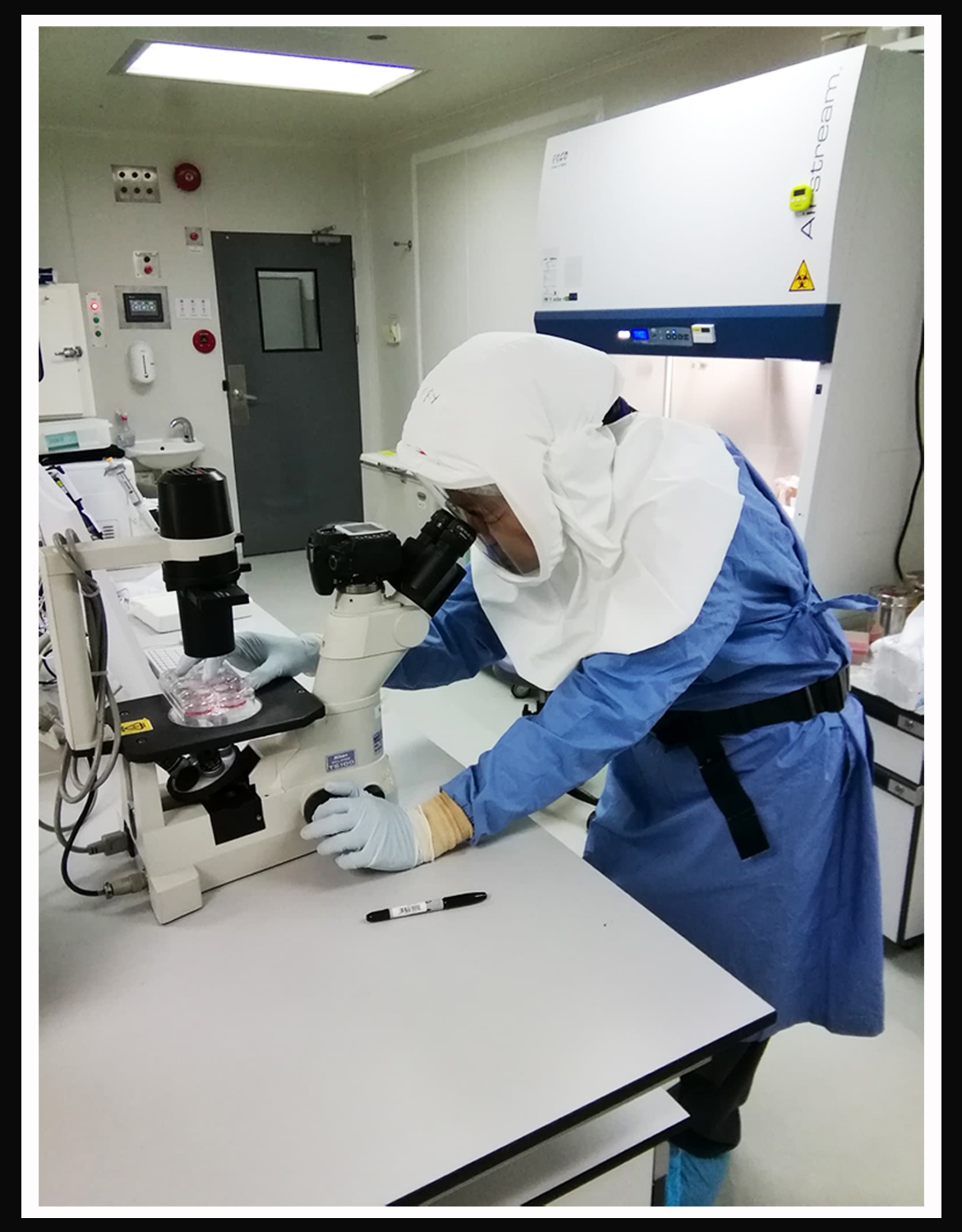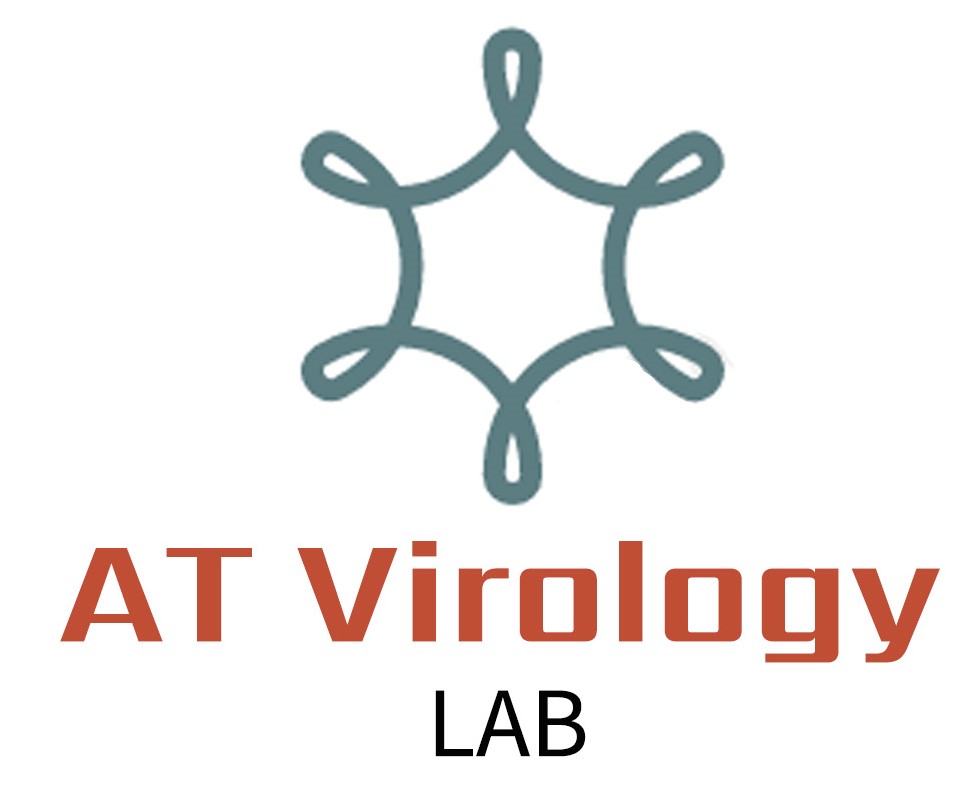RESEARCH

Serological Assay Development
We developed a live-virus neutralization assay that accommodates the study of important viral pathogens such as Influenza A (H5N1), HIV and the renowned SARS-CoV-2. The applications of our neutralization assay extend to multiple studies that includes:
Drug Discovery

Drug Discovery
Development of human primary cell platforms using SARS-CoV-2 as a model
Motivated by the need for crucial therapeutics during the COVID-19 pandemic, we aimed to establish organ-specific models including primary lung epithelial cells, neuronal cells, mesenchymal stem cells and cardiomyocytes for the study of viral infections and develop them into novel platforms for drug discovery.
Importantly, in order to evaluate their suitability as models for testing drug candidates, as well as to investigate the viral infection mechanisms, we integrated the cutting edge single-cell RNA-sequencing (scRNA-seq) technology to dissect the heterogeneity of our various primary cell models.
Drug Discovery
High-content screening for antiviral candidates
Using high-content screening for antiviral candidates by using fluorescence-based SARS-CoV-2 nucleoprotein detection, we demonstrated that the Thai medicinal herb, Boesenbergia rotunda extract and its phytochemical, panduratin A, were promising candidates for the novel treatment against COVID-19.
We were also able to evaluate the anti-SARS-CoV-2 activity of Andrographis paniculata extract and its major component, andrographolide. The potent anti-SARS-CoV-2 activities of A. paniculata extract and andrographolide were complemented with their high safety margin over cell culture models that represent major human organs that include the lung, brain, liver, kidney and intestines.
Drug Discovery
Mechanism of action of antiviral compounds
Motivated to identify host targets that could interact with the antiviral compounds discovered through high-content screening, we are currently in collaboration with other researchers, which would allow us to:
modify the side chains of antiviral compounds to allow easier virus-host cell interaction; and
reveal the pattern of protein expression and identify potential molecular pathways by proteomic analysis which is extensively used for whole proteins analysis.

Pathogen Discovery
In Thailand, routine viral diagnostics fail to identify certain types of viruses. Guided by the VirCapSeq-incorporated Target Enrichment Next Generation Sequencing (TE-NGS) Platform, we studied the blood virome of hematopoietic stem cell transplant pediatric patients with unexplained febrile neutropenia. For the first time in this patient cohort, we reported the prevalence, as well as the virus whole genome and the intra-host diversity of a virus that is not covered by routine diagnostic tests.
In line with this, our team also developed a fully automated bioinformatics pipeline, Entourage (https://codeberg.org/CENMIG/Entourage), that facilitates the detection and identification of pathogens in clinical NGS data.
We are currently optimizing this TE-NGS platform for a multitude of other sample types such as: the intra-ocular virome in patients with unexplained uveitis, the CSF virome of patients with unexplained neurological symptoms, etc. In the future, we plan to establish a go-to service/research center for viral detection, surveillance, and discovery, as well as investigation of challenging clinical cases of unknown etiology, which can be followed at the Virus/Virome-X Discovery Hub (https://sites.google.com/student.mahidol.edu/virusvirome-x/main?authuser=0).
Pathogenesis

Pathogenesis
SARS-CoV-2 subgenomic mRNA detection to differentiate transmissible viruses
In response to the complications on differentiating between reinfection and persistent infections among COVID-19 patients using standard methods, we proposed the potential role of the detection of SARS-CoV-2 subgenomic RNA as the marker of viral infectivity. Our findings suggest the feasibility of the use of subgenomic RNA RT-PCR as a surrogate marker for SARS-CoV-2 infectivity in lieu of current standard methods. Here, we suggest that COVID-19 patients with negative subgenomic N RNA RT-PCR could be considered for ending their period of isolation.
Pathogenesis
Exploration of SARS-CoV-2 cell culture adaptation to different cell lines
SARS-CoV-2 is a rapidly adapting virus, hence, viruses propagated in the lab may lack authentic characteristics of the naturally circulating viruses. Therefore, to understand how different variants of SARS-CoV-2 adapts to different cell lines, we studied the genome-wide cell culture adaptation in cell lines that are commonly used for SARS-CoV-2 propagation.
